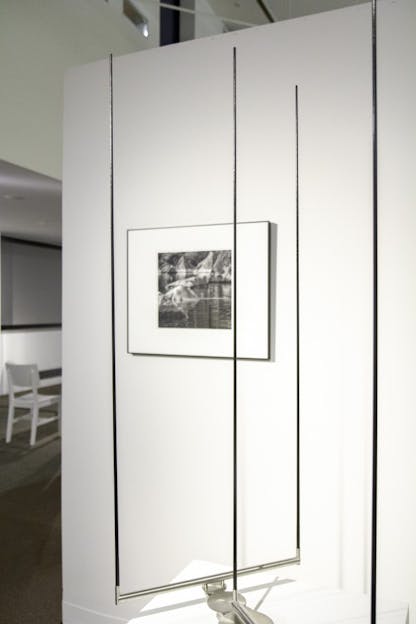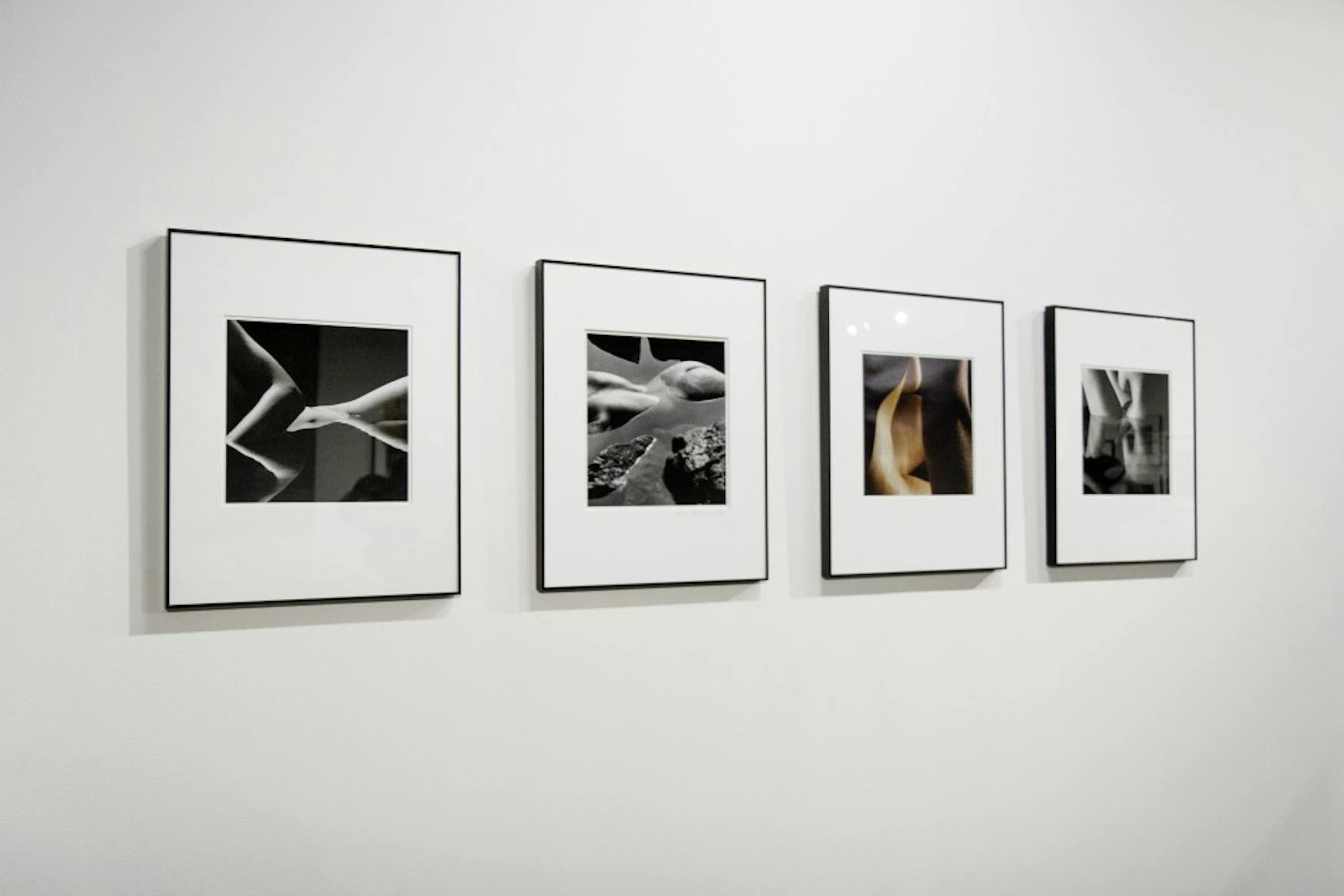Kniznick Gallery set in motion
Artists Anne Lilly and Karin Rosenthal unveiled their new collaborative exhibit, comprised of Rosenthal’s stunning photographs and Lilly’s impactful sculptures, at Brandeis’ Women’s Studies Research Center on Thursday. The photographs focused on the naked human body — often in extreme close-ups — incorporating water to obscure certain body parts. Two of the four stainless steel sculptures also dealt with the human body and obscuring vision, interacting with the viewer and their body.
A small enclave of the exhibit spotlights Lilly’s kinetic sculpture: two chairs facing each other as mirrors move between them. Two gallery-goers sit opposite each other and sustain eye contact until the two sliding mirrors join together, showing each participant’s own reflection. These mirrors moved very slowly, allowing the audience to see the reflection slowly fade back into to the person on the other side. Without someone on the other side, it looks like the viewer gets erased from the exhibit, and the white chair is all that is on the other side as the mirrors slide away.

By: Yvette Sei
Another similar sculpture in the enclave also uses mirrors as its medium, but this time the two mirrors rotate around each other in front of the chair, showing the viewer, then erasing the viewer and instead reflecting everything around them. Both sculptures — although slightly similar — are incredibly impactful and interesting. They fill the gallery not only with white noise from the motors but also with exciting energy.
The other two sculptures were interactive and mesmerising pieces consisting of stainless steel that patrons could gently push to start moving in a loop. These both moved so smoothly that the slightest push would set them in motion for a very long time. Even though the gallery was empty, one of the sculptures had been set off by a previous visitor and continued through most of my visit without any additional prompting. It seemed to be powered by motors similar to the ones powering the mirrors. In fact, it ran simply on perfect engineering.

By: Yvette Sei
These compelling sculptures were surrounded by Rosenthal’s photography, which complimented Lilly’s mirrors wonderfully. Water played a huge role in the photographs, as the reflections in the surface of the water obscured parts of the body and even disoriented the viewer. It was hard to tell what exactly was in some of the photos — Rosenthal isolated many parts and also used various natural surroundings such as sand and water. While the photos were stunning and played so well with the themes set by the kinetic sculptures, they were not as exciting, new or engaging as the sculptures. The art forms complemented each other well, but the sculptures needed no complement to begin with and didn’t benefit much from the slightly too-contrived photography.



Please note All comments are eligible for publication in The Justice.